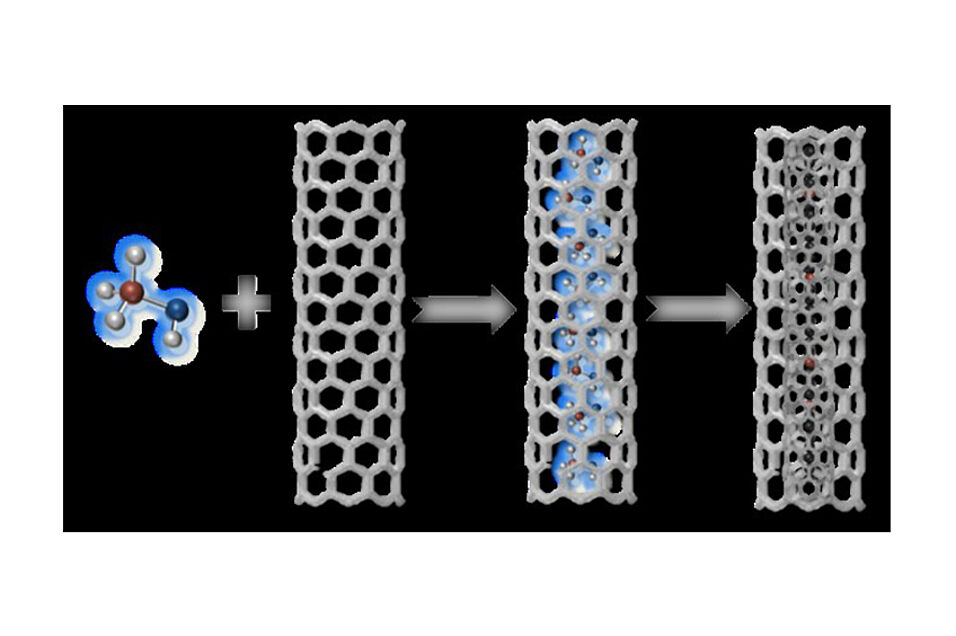Carbyne, as a new truly one-dimensional carbon allotrope is one of the most interesting existing one-dimensional materials because of its predicted outstanding mechanical, thermal and electronic properties but synthesizing it has remained challenging for more than 125 years because of its instability. In our previous studies since 2016, we showed a pathway to overcome this issue by confining very long carbon chains, i.e. carbyne, inside the hollow core of double walled carbon nanotubes by high temperature and high vacuum annealing (Nature Mater. 2016, 15, 634-639). Last year we have proven that this material has at least a factor of 100 stronger resonance cross section as any other known material for Raman scattering (Nano Lett. 2020, 20, 6750-6755). This paves the way of the application of confined carbyne as tracers or contact free temperature sensor. However, gaining control on the growth and functionality of confined carbyne remained challenging. A recent study (Nano Lett. 2021, 21, 1096-1101) showed a novel pathway by stepwise growth of confined carbyne with single walled carbon nanotubes transformed to double walled carbon nanotubes first.
The present study led by Thomas Pichler at Vienna University and Lei Shi at Sun Yat-Sen University in China, which has been just published in Angewandte Chemie, reports a breakthrough in the controlled growth carbyne in double walled carbon nanotubes with greatly enhanced yield using nanotubes filled with liquid precursors as starting material.
This method uniquely facilitates also to tailor the functionality of confined carbyne by isotope labelling. As shown in the sketch below, we used isotopic labelled liquid precursors and encapsulated them inside carbon nanotubes as carbon source for further synthesis. This allowed us to obtain pioneering results on isotope engineered carbyne with around 11.9% of 13C-labelling using 13C-methanol as precursor. This method of isotope engineering of carbyne brings unprecedented capability to tune the properties of these confined long linear carbon chains. So far, only the interaction with nanotubes that host and protect them from the environment has been found to offer a possibility to control carbyne´s properties.
"Isotope engineering keeps the same chemical structure but implies identifying nuclei of different sizes with tremendous implications in the physical performance of the material itself, for instance regarding its thermal conductivity. Hence, the method reported here opens a new opportunity for the design of advanced heterostructured nanomaterials and paves the way to applications in quantum spin transport, nanoelectronics, nuclear magnetic resonance and others, with a huge enforcement potential within short reach." said lead author Weili Cui.
The work was supported by FWF and the National Natural Science Foundation of China.
Publication in "Angew. Chem.": "Isotopic labelling of confined carbyne" Weili Cui, Lei Shi, Kecheng Cao, Ute Kaiser, Takeshi Saito, Paola Ayala, Thomas Pichler Angewandte Chemie Int. Edition, DOI: 10.1002/anie.202017356

